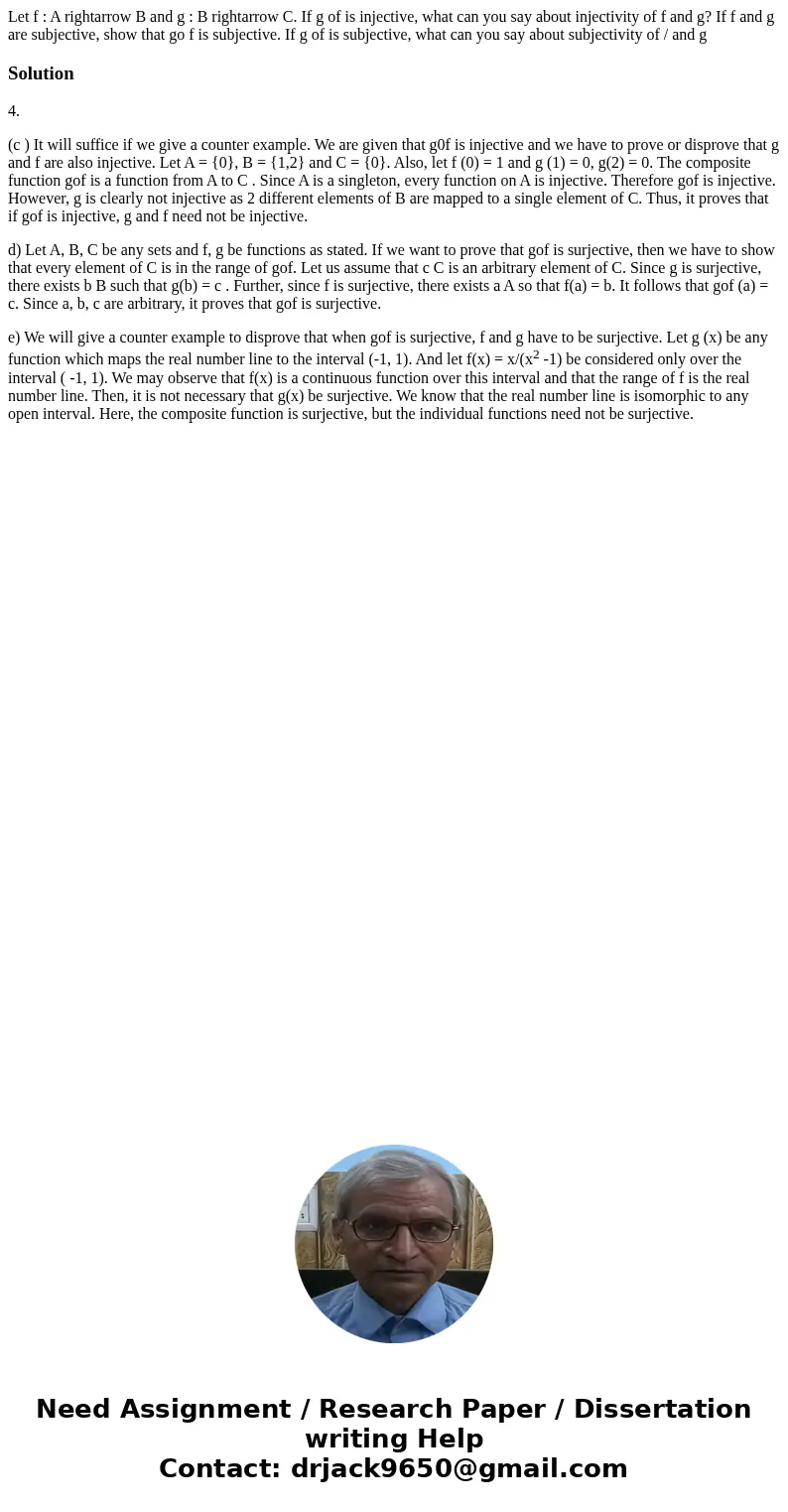Let f A rightarrow B and g B rightarrow C If g of is injec
Solution
4.
(c ) It will suffice if we give a counter example. We are given that g0f is injective and we have to prove or disprove that g and f are also injective. Let A = {0}, B = {1,2} and C = {0}. Also, let f (0) = 1 and g (1) = 0, g(2) = 0. The composite function gof is a function from A to C . Since A is a singleton, every function on A is injective. Therefore gof is injective. However, g is clearly not injective as 2 different elements of B are mapped to a single element of C. Thus, it proves that if gof is injective, g and f need not be injective.
d) Let A, B, C be any sets and f, g be functions as stated. If we want to prove that gof is surjective, then we have to show that every element of C is in the range of gof. Let us assume that c C is an arbitrary element of C. Since g is surjective, there exists b B such that g(b) = c . Further, since f is surjective, there exists a A so that f(a) = b. It follows that gof (a) = c. Since a, b, c are arbitrary, it proves that gof is surjective.
e) We will give a counter example to disprove that when gof is surjective, f and g have to be surjective. Let g (x) be any function which maps the real number line to the interval (-1, 1). And let f(x) = x/(x2 -1) be considered only over the interval ( -1, 1). We may observe that f(x) is a continuous function over this interval and that the range of f is the real number line. Then, it is not necessary that g(x) be surjective. We know that the real number line is isomorphic to any open interval. Here, the composite function is surjective, but the individual functions need not be surjective.

 Homework Sourse
Homework Sourse